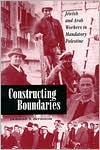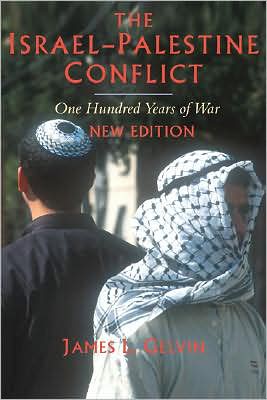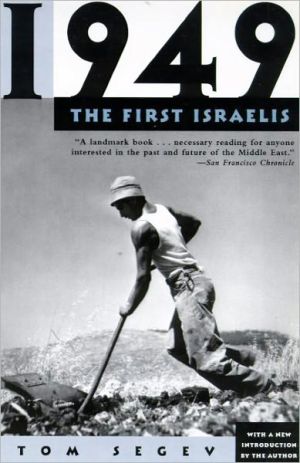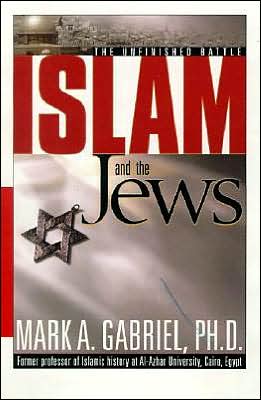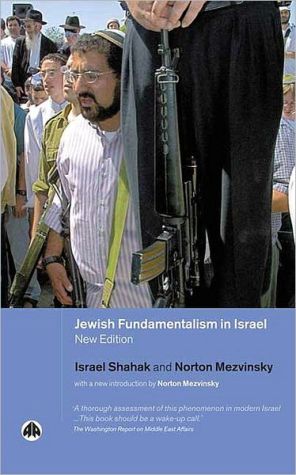Constructing Boundaries: Jewish and Arab Workers in Mandatory Palestine
Constructing Boundaries examines the competition, interaction, and impact among Jewish and Arab workers in the labor market of Mandatory Palestine. It is both a labor market study, based on the Split Labor Market Theory, and a case study of the labor market of Haifa, the center of economic development in Mandatory Palestine. Bernstein demonstrates the impact of the pervasive national conflict on the relations between the workers of the two nationalities and between their labor movements. She...
Search in google:
Bernstein (U. of Haifa) examines the competition and interaction between Jewish and Arab workers, and the impact of both on the labor market of the British Mandate of Palestine during the 1920s and 1930s. Combining a labor market study based on the Split Labor Market Theory and a case study of the labor market of Haifa, the center of economic development during the period, she demonstrates the impact of the pervasive national conflict on the relations between the workers of the two nationalities and between their labor movements. She analyzes the attempts of Jewish workers to construct boundaries between themselves and Arab workers, but also highlights cases of cooperation between the two groups and of joint class struggle. Annotation c. Book News, Inc., Portland, OR
TablesxiIllustrationsxiiiPrefacexvIntroduction1Current Approaches and New Directions3The Split Labor Market Theory and Its Historical Grounding10Part IThe Split DevelopsChapter 1The Split Labor Market of Mandatory Palestine: Actors, Sectors, and Strategies19Demographic and Social Trends19Jewish and Arab Labor22Jewish Labor23Arab Labor25The Differential Value of Jewish and Arab Labor29The Economic Sectors of Palestine33Interrelations34From Sectors Back to Actors39Alternative Strategies42Chapter 2Haifa--Growing and Growing Apart48Early Tremors of Growth48Expanding Communities and New Neighborhoods53Demographic Growth--Absolute and Relative Change54Spatial Growth--the Formation of New Neighborhoods55Haifa--the Political Context61Spheres of Cooperation and the Pull of Segregation63Social Relations64Municipal Relations65Economic Relations67Arab and Jewish Labor70Arab Labor70Jewish Labor74Wages and Differentials76To Conclude80Part IIIn the Labor MarketChapter 3Construction--Competing at the Work Site83Construction--Fluctuation and Scope85Dilemmas of Organization88Wages and Competition92The Borowski Building99To Conclude107Chapter 4Manufacturing Industry--Almost Separate109Trends in Manufacturing in Palestine111Jewish Industry111Arab Industry113Mutual Impact114Haifa--the Center of Heavy Industry116General Trends116Shemen and Nesher--Nahum Wilbush and Michael Pollak118The Tobacco and Cigarette Industry--Mabruk and Hajj Tahir Qaraman124When Working Together132The Nur Match Factory133The Nesher Quarry134Mosaica Tile Factory136To Conclude138Chapter 5The Haifa Port--Entering the Gateway140The Haifa Port and the Issue of Jewish Labor141The Labor Force of the Haifa Port--Major Trends147Exporting the Citrus Crates149In the Customs Transit Shed154Working Together, Acting Together?161To Conclude164Chapter 6The Palestine Railways: "Here We Are All Natives ..." or the Limits of Cooperation166Trends in the Labor Force of the Palestine Railway170The Palestine Railway and Its Internal Organization174Wage and Conditions of Service180Joint Action and Joint Organization186Together Within a Histadrut-Oriented Organization, 1919-1927187The Joint Committee, 1928-1936193Two Organizations and Three Strikes, 1939-1947197To Conclude204Conclusion206Glossary217Abbreviations219Notes221Bibliography255Subject Index267Name Index275
